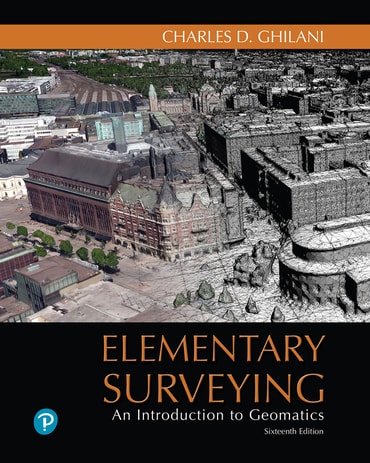Switch content of the page by the Role togglethe content would be changed according to the role

Elementary Surveying: An Introduction to Geomatics, 15th edition
Published by Pearson (January 31, 2017) © 2018
- Charles D. Ghilani Pennsylvania State University
$149.32
Price Reduced From: $186.65
18-month access
$129.99
ISBN-13: 9780134605968
Mastering Engineering with Pearson eText for Elementary Surveying: An Introduction to Geomatics
Published 2017
Instant Access
ISBN-13: 9780134631783
Elementary Surveying: An Introduction to Geomatics -- Instant Access for Video Solutions
Published 2017
Need help? Get in touch